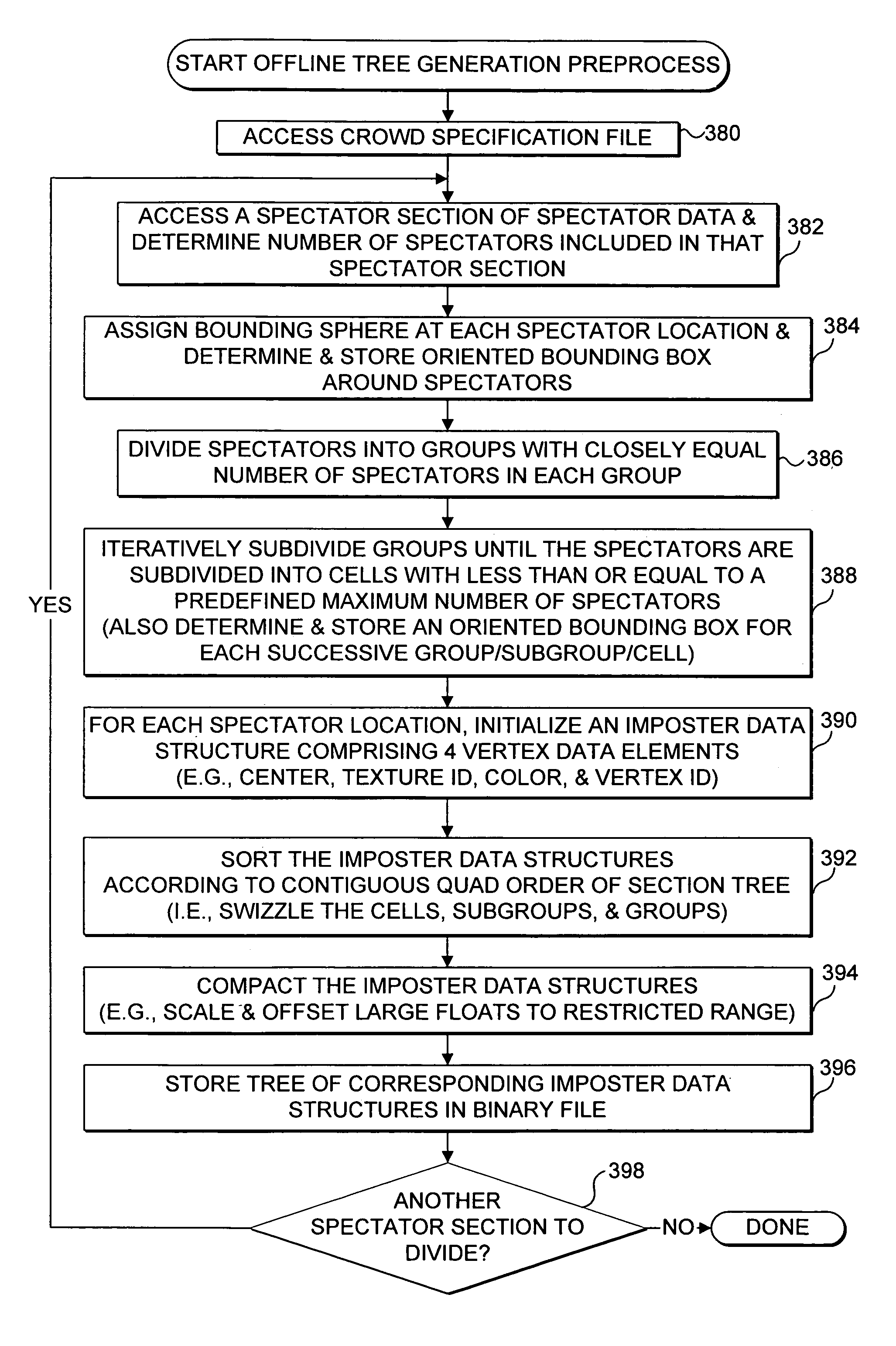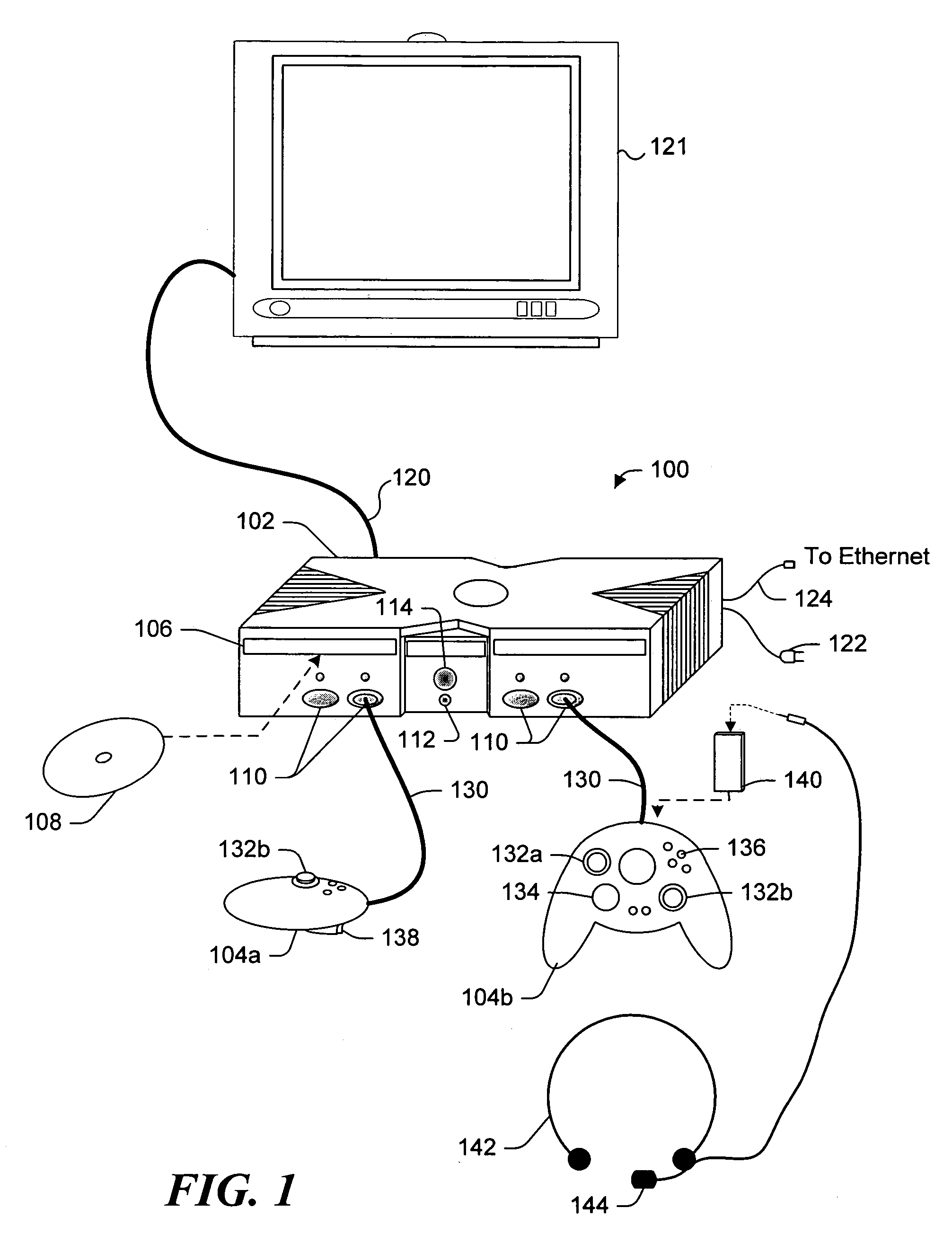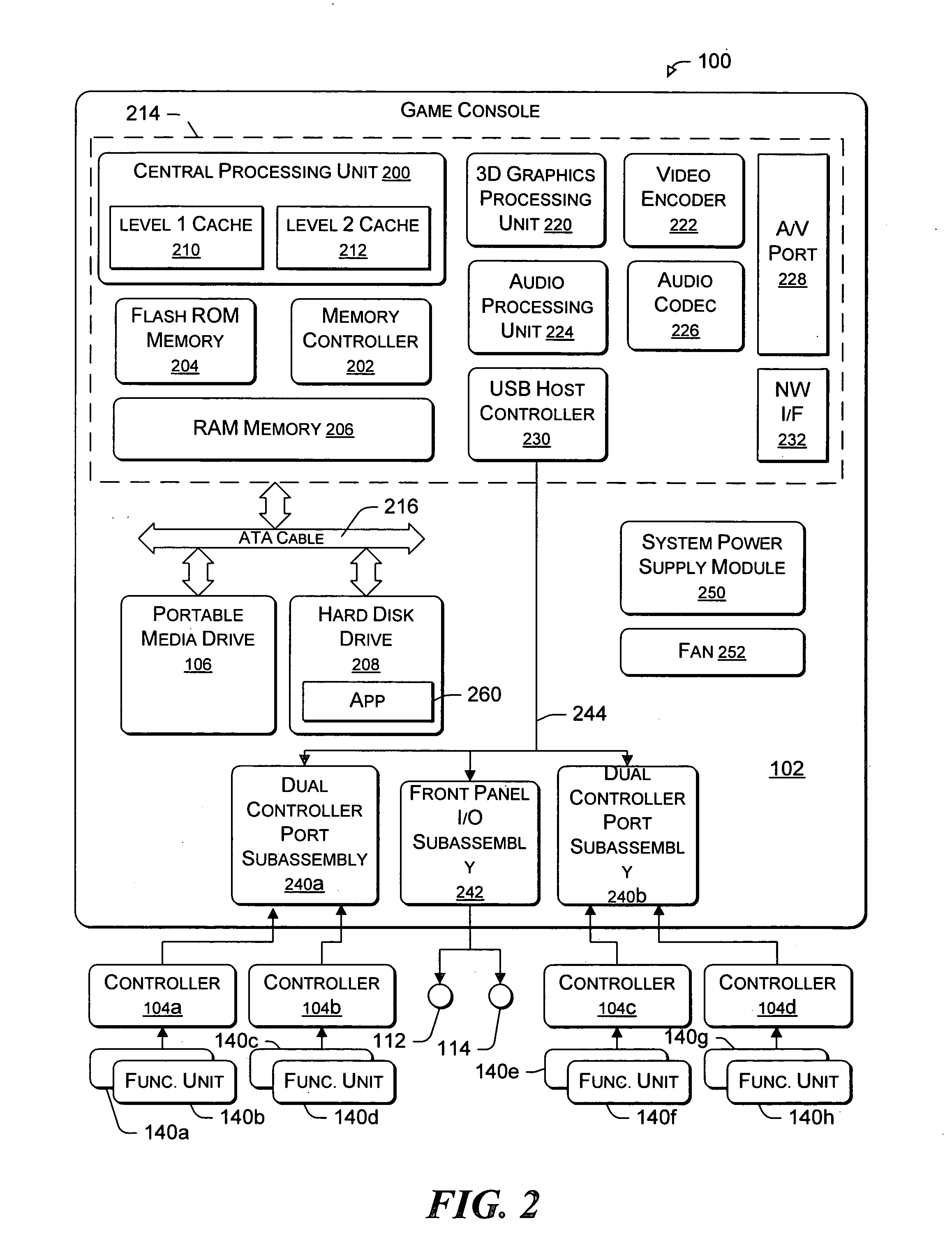Dynamic 2D imposters of 3D graphic objects
a technology of graphic objects and imposters, applied in the field of dynamically creating and updating twodimensional (2d) imposters of threedimensional (3d) graphic objects, can solve the problems of limited amount of available processing power dedicated to rendering background objects, prohibitive current hardware, and difficulty in realizing crowds, etc., to achieve a sufficient variety and minimize processor time and memory. , the effect of reducing the number o
- Summary
- Abstract
- Description
- Claims
- Application Information
AI Technical Summary
Benefits of technology
Problems solved by technology
Method used
Image
Examples
Embodiment Construction
[0025]A preferred embodiment of the present invention is described below in regard to an exemplary use in providing a simulated crowd of spectators for an electronic gaming system that is designed to execute gaming software in coordination with a network gaming service. Those skilled in the art will recognize that the present invention may also be implemented for displaying 2D imposters of other graphical objects such as terrain objects, structures, vegetation objects, almost any type of objects that are not the primary focus of a display scene. It is also emphasized that the present invention can be practiced on a variety of computing machines such as a personal computer (PC), a set-top box, an arcade game, a hand-held device, and other related systems that display a virtual environment having a background.
Exemplary Operating Environment
[0026]As shown in FIG. 1, an exemplary electronic gaming system 100 that is suitable for practicing the present invention includes a game console 1...
PUM
 Login to View More
Login to View More Abstract
Description
Claims
Application Information
 Login to View More
Login to View More - R&D
- Intellectual Property
- Life Sciences
- Materials
- Tech Scout
- Unparalleled Data Quality
- Higher Quality Content
- 60% Fewer Hallucinations
Browse by: Latest US Patents, China's latest patents, Technical Efficacy Thesaurus, Application Domain, Technology Topic, Popular Technical Reports.
© 2025 PatSnap. All rights reserved.Legal|Privacy policy|Modern Slavery Act Transparency Statement|Sitemap|About US| Contact US: help@patsnap.com



